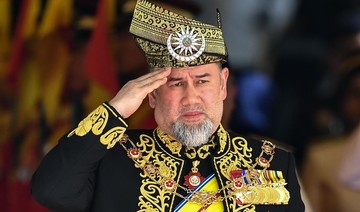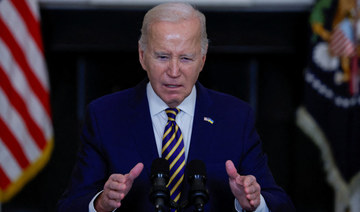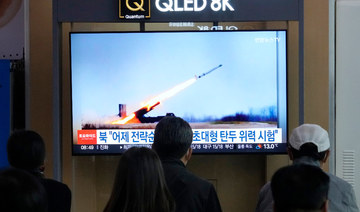By EILEEN NG | AP
KUALA LUMPUR, Malaysia: Malaysia’s royal families will meet on January 24 to pick a new king after Sultan Muhammad V abdicated unexpectedly after just two years on the throne, an official said Monday.
The 49-year-old ruler resigned Sunday as Malaysia’s 15th king, marking the first abdication in the nation’s history and cutting short his five-year term. No reason was given, but the move came after he reportedly married a 25-year-old former Russian beauty queen in November while on medical leave.
Keeper of the Ruler’s Seal, Syed Danial Syed Ahmad, said the Council of Rulers held a meeting Monday and set Jan. 24 to elect a new king. He said in a statement that the new king would be sworn in on January 31.
The council comprises nine hereditary state rulers who take turns as Malaysia’s king for five-year terms. Malaysia is the only country in the world to have a rotational monarchy under a unique system maintained since the country’s independence from Britain in 1957.
Prime Minister Mahathir Mohamad said earlier Monday that it was up to the Council of Rulers to pick the new king, but added that he hoped it would be done quickly.
During his first stint as prime minister for 22 years until his retirement in 2003, Mahathir pushed through constitutional amendments that stripped the sultans’ power to veto state and federal legislation, and curbed their legal immunity.
The monarch’s role is largely ceremonial, since administrative power is vested in the prime minister and parliament. But the monarch is highly regarded, particularly among the ethnic Malay Muslim majority, as the supreme upholder of Islam and Malay tradition.
Still, some sultans have in recent years become more active in business and politics. Sultan Muhammad V delayed Mahathir’s swearing-in as prime minister after a historic election victory in May last year, and also delayed giving his consent to the appointment of a non-Muslim attorney general.
Sultan Muhammad V was installed as king in December 2016. He was one of Malaysia’s youngest constitutional monarchs and has a love for extreme sports.
Reports in Russian and British media and on social media featured photos of his wedding with a former Miss Moscow that reportedly took place in Moscow. Neither the sultan, the palace nor the government had officially confirmed the wedding.
Speculation that Sultan Muhammad V would step down emerged last week, shortly after he returned from a two-month leave, but Mahathir had said Friday that he was unaware of any abdication plans.
National police chief Mohamad Fuzi Harun warned the public Monday not to speculate on Sultan Muhammad V’s abdication. He was quoted as saying by local media that police had received several reports of provocative statements being made on social media and were investigating.
Next in line for the top job is Sultan Azlan Shah of central Pahang state, who was king from 1979 to 1984, but the 88-year-old is now unwell and didn’t attend Monday’s council meeting. Some observers said he can abdicate in favor of his son, who can become king.
After Pahang is the billionaire Sultan Ibrahim Ismail of southern Johor state, who is involved in business, owns a fleet of jets and loves Harley-Davidson motorcycles.
Malaysia royals to pick new king after Muhhammad V abdication
Malaysia royals to pick new king after Muhhammad V abdication
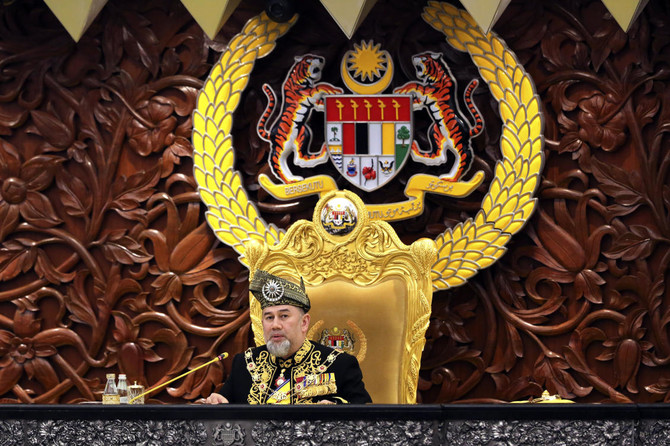
- Sultan Muhammad V’s resignation as Malaysia’s 15th king marks the first abdication in the nation’s history
As India votes, misinformation surges on social media: ‘The whole country is paying the price’

- Tech companies like Google and Meta say they are working to combat deceptive or hateful content while helping voters find reliable sources
- Researchers say their promises ring hollow after years of failed enforcement, “cookie-cutter” approaches that fail to account for India’s diversity
NEW DELHI: Bollywood stars seldom weigh in on politics, so videos showing two celebrities criticizing Indian Prime Minister Narendra Modi — and endorsing his main opposition, the Congress party — were bound to go viral.
But the clips of A-list actors Aamir Khan and Ranveer Singh were fake, AI-generated videos that were yet another example of the false or misleading claims swirling online with the goal of influencing India’s election. Both actors filed complaints with police but such actions do little to stanch the flow of such misinformation.
Claims circulating online in India recently have misstated details about casting a ballot, claimed without evidence that the election will be rigged, and called for violence against India’s Muslims.
Researchers who track misinformation and hate speech in India say tech companies’ poor enforcement of their own policies has created perfect conditions for harmful content that could distort public opinion, spur violence and leave millions of voters wondering what to believe.
“A non-discerning user or regular user has no idea whether it’s someone, an individual sharing his or her thoughts on the other end, or is it a bot?” Rekha Singh, a 49-year-old voter, told The Associated Press. Singh said she worries that social media algorithms distort voters’ view of reality. “So you are biased without even realizing it,” she said.
In a year crowded with big elections, the sprawling vote in India stands out. The world’s most populous country boasts dozens of languages, the greatest number of WhatsApp users as well as the largest number of YouTube subscribers. Nearly 1 billion voters are eligible to cast a ballot in the election, which runs into June.
Tech companies like Google and Meta, the owner of Facebook, WhatsApp and Instagram, say they are working to combat deceptive or hateful content while helping voters find reliable sources. But researchers who have long tracked disinformation in India say their promises ring hollow after years of failed enforcement and “cookie-cutter” approaches that fail to account for India’s linguistic, religious, geographic and cultural diversity.
Given India’s size and its importance for social media companies, you might expect more of a focus, say disinformation researchers who focus on India.
“The platforms are earning money off of this. They are benefiting from it, and the whole country is paying the price,” said Ritumbra Manuvie a law professor at the University of Groningen in the Netherlands. Manuvie is a leader of The London Story, an Indian diaspora group which last month organized a protest outside Meta’s London offices.
Research by the group and another organization, India Civil Watch International, found that Meta allowed political advertisements and posts that contained anti-Muslim hate speech, Hindu nationalist narratives, misogynistic posts about female candidates as well as ads encouraging violence against political opponents.
The ads were seen more than 65 million times over 90 days earlier this year. Together they cost more than $1 million.
Meta defends its work on global elections and disputed the findings of the research on India, noting that it has expanded its work with independent fact-checking organizations ahead of the election, and has employees around the world ready to act in case its platforms are misused to spread misinformation. Nick Clegg, Meta’s president of global affairs, said of India’s election: “It’s a huge, huge test for us.”
“We have months and months and months of preparation in India,” he told The Associated Press during a recent interview. “We have teams working around the clock. We have fact checkers in multiple languages operating in India. We have a 24-hour escalation system.”
YouTube is another problematic site for disinformation in India, experts say. To test how well that video-sharing platform was doing in enforcing its own rules, researchers at the nonprofits Global Witness and Access Now created 48 fake ads in English, Hindi and Telugu with false voting information or calls for violence. One claimed India raised its voting age to 21, though it remains 18, while another said women could vote by text message, though they cannot. A third called for the use of force at polling places.
When Global Witness submitted the ads to YouTube for approval, the response was disappointing, said Henry Peck, an investigator at Global Witness.
“YouTube didn’t act on any of them,” Peck said, and instead approved the ads for publication.
Google, YouTube’s owner, criticized the research and noted that it has multiple procedures in place to catch ads that violate its rules. Global Witness removed the ads before they could be spotted and blocked, the company said.
“Our policies explicitly prohibit ads making demonstrably false claims that could undermine participation or trust in an election, which we enforce in several Indian languages,” Google said in a statement. The company also noted its partnerships with fact-checking groups.
AI is this year’s newest threat, as advances in programs make it easier than ever to create lifelike images, video or audio. AI deepfakes are popping up in elections across the world, from Moldova to Bangladesh.
Senthil Nayagam, founder of an AI startup called Muonium AI, believes there is growing demand for deepfakes, especially of politicians. In the run up to the election, he had several inquiries on making political videos using AI. “There’s a market for this, no doubt,” he said.
Some of the fakes Nayagam produces feature dead politicians and are not meant to be taken seriously, but other deepfakes circulating online could potentially fool voters. It’s a danger Modi himself has highlighted.
“We need to educate people about artificial intelligence and deepfakes, how it works, what it can do,” Modi said.
India’s Information and Technology Ministry has directed social media companies to remove disinformation, especially deepfakes. But experts say a lack of clear regulation or law focused on AI and deepfakes makes it harder to squash, leaving it to voters to determine what is true and what is fiction.
For first-time voter Ankita Jasra, 18, these uncertainties can make it hard to know what to believe.
“If I don’t know what is being said is true, I don’t think I can trust in the people that are governing my country,” she said.
New film captures Afghan women’s courage in failed peace talks with Taliban
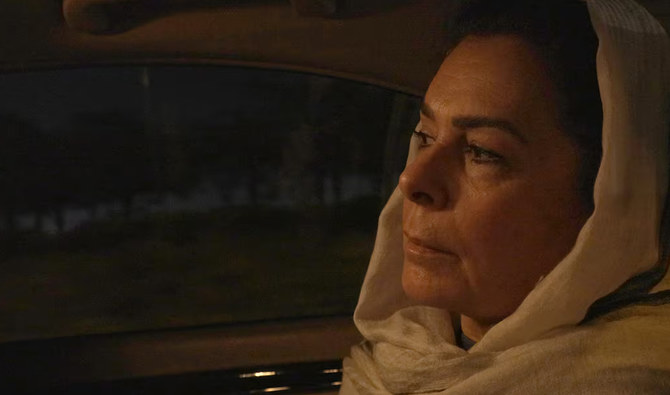
- Directed by Roya Sadat, the 95-minute “The Sharp Edge of Peace” is a testament to the courage of Afghan women leaders
- Fawzia Koofi and other leaders continue advocating for change since Taliban seized power in 2021 and curtailed women’s rights
TORONTO: The new documentary “The Sharp Edge of Peace” begins with a harrowing scene: Fawzia Koofi, a former member of Afghanistan’s parliament and a women’s rights activist, recovering in a hospital bed after surviving an assassination attempt in August 2020.
While traveling to Kabul with her daughter, Koofi was ambushed by unidentified gunmen who opened fire on her vehicle.
“They thought I was shot in the head and died,” Koofi says in the documentary, which has its world premiere on Saturday at the Canadian documentary festival Hot Docs that runs through May 5.
Directed by Roya Sadat, the 95-minute film is a testament to the courage of Afghan women leaders who continue advocating for change since the Taliban seized power in August 2021, and have drastically curtailed women’s freedoms and rights.
“This is a tragedy, but at the same time, you can see the power of women and see the beauty of this country when women participate,” Sadat told Reuters.
Koofi’s resolve remained unshaken even after the attack, which was not the first she’s faced.
She was a key figure among women negotiators, including Fatima Gailani, Habiba Sarabi, and Sharifa Zurmati, involved in the intra-Afghan talks in Doha, Qatar aimed at striking a peace deal with the Taliban.
The documentary covers the failed negotiations from the perspective of the women on Afghanistan’s negotiating team.
Once at the negotiating table, Koofi realized the Taliban already saw themselves as victorious.
“When President Biden came to power, he announced that he would withdraw his troops from Afghanistan regardless, with no conditions, and that was a boost to the Taliban’s morale,” she said in an interview.
The Biden administration has previously blamed the chaotic US withdrawal on the Trump administration, which struck the agreement with the Taliban.
‘WE ARE BEING ERASED’
Koofi, now in exile, continues to work from the UK by engaging with international bodies like the United Nations and the European Union, pushing policymakers to recognize the plight of Afghan women under Taliban rule.
“It’s painful that most of these countries think that we should influence and change the perspectives of the Taliban,” Koofi said, adding that since regaining power, they have not changed at all.
“We are being erased,” Koofi said of the steady decline in women’s rights in Afghanistan.
Undeterred, Koofi founded the Afghan Women Coalition for Change with a goal of establishing gender apartheid as an internationally recognized crime against humanity.
Gailani, chair of Afghanistan Future Thought Forum, told Reuters the negotiating team never wanted US soldiers or NATO to stay in the country forever, but expected a smoother withdrawal and a political settlement.
“Some Westerners believe that they alone gave freedom to the Afghan woman, that she couldn’t do anything herself, which is not the case,” says fellow negotiator Sarabi at the close of the film. “Afghan women didn’t get here easily, they endured a lot of struggles.”
Death toll from south China road collapse rises to 36

- The death toll was up from 24 people on Wednesday afternoon
- Vehicles careened into the nearly 18-meter-long gash in the tarmac and plummeted down the steep slope below
Beijing, China: The death toll from a highway collapse in southern China’s Guangdong province has risen to 36, state media said Thursday, as rescue work continued.
Heavy rains caused a stretch of road running from Meizhou city toward Dabu county to cave in at around 2:10 am on Wednesday (1810 GMT Tuesday), according to state news agency Xinhua.
Vehicles careened into the nearly 18-meter-long (59-foot) gash in the tarmac and plummeted down the steep slope below.
Guangdong, a densely populated industrial powerhouse, has been hit by a string of disasters attributed to extreme weather events in recent weeks.
The storms have been much heavier than expected this time of year and have been linked to climate change.
China is the biggest emitter of the greenhouse gases that contribute to climate change but has pledged to reduce emissions to net zero by 2060.
“As of 5:30 am on (Thursday)... 36 people have died, and 30 people have been injured,” Xinhua said, adding that the injuries were not life-threatening.
The death toll was up from 24 people on Wednesday afternoon.
Footage by state broadcaster CCTV showed excavators digging through the muddy hillside below the collapsed road.
Nearby, a crane lifted charred, wrecked vehicles onto a lorry as people watched from behind a cordon.
State media called the road collapse a “natural geological disaster” caused by the “impact of persistent heavy rain.”
President Xi Jinping ordered officials to “go all-out in on-site rescue work and treatment of the injured, and arrange for the management of risks and hidden dangers in a timely manner,” CCTV said on Thursday.
Around 500 people have been dispatched to help with the rescue operation, it added.
The provincial government has “mobilized elite specialized forces and gone all out to carry out... search and rescue,” according to Xinhua.
An official notice on Wednesday advised that part of the S12 highway was closed in both directions, requiring detours.
Parts of central and eastern Guangdong have received up to 600 millimeters of rain in the last 10 days, three times the amount normally expected at this time of year, the national weather office said Thursday.
Up to 120 millimeters more rain was forecast for the province’s southwestern areas on Thursday, alongside further downpours across southern China until Sunday.
The conditions “raise the risk of disasters, especially geological disasters, which have a certain lag time,” the weather office said.
The emergency management ministry also warned that persistent rain would make such disasters more likely.
Officials have warned people to plan journeys carefully during the May public holiday, which runs until Sunday.
Massive downpours in Guangdong last month sparked floods that claimed four lives and forced the evacuation of more than 100,000 people.
And last week, a tornado killed five people when it ripped through the megacity of Guangzhou.
South Korea parliament approves bill on new inquiry into deadly 2022 crowd crush

- An earlier bill was vetoed by President Yoon Suk-yeol
SEOUL: South Korea’s National Assembly voted on Thursday to approve a bill backed by the ruling and opposition parties to launch a fresh probe into the deadly Halloween crowd crush in the capital Seoul in 2022.
An earlier bill, which was backed the opposition-led parliament without the support of the ruling People Power Party (PPP), was vetoed by President Yoon Suk-yeol in January.
The latest bill is a compromise that removes granting full investigative power to the panel, which Yoon had objected to, according to his office.
Under the bill, a committee made up of members recommended by two major parties and a chair chosen by them through consultations will look into the tragedy.
The passage of the bill comes after Yoon met opposition leader Lee Jae-myung of the Democratic Party for talks on Monday following the PPP’s crushing general election defeat last month.
It also comes amid growing pressure on authorities, including from relatives of the victims, to hold those responsible to account.
A spokesperson for Yoon on Wednesday welcomed the agreement reached between the ruling and opposition parties on the bill as indicating a return to cooperation in politics.
The Halloween crowd crush in Seoul’s Itaewon district in 2022 killed nearly 160 people and relatives of the victims as well as the United Nations Human Rights Committee have since called for an independent inquiry.
A police investigation published early last year concluded that a lack of preparation and an inadequate response were the main factors behind the deadly crush.
In January, South Korean prosecutors indicted the former head of the Seoul Metropolitan Police Agency, charging him with contributing through negligence to the crush.
No senior government figures, including the interior and safety minister, have resigned or been sacked so far over the crush.
Extreme heat shuts schools for millions, widening learning gaps worldwide

- Bangladesh, Philippines, India announce school closures
- High temperatures slow down the brain’s cognitive functions, lowering pupils’ ability to retain and process information: study
Hena Khan, a grade nine student in Dhaka, has struggled to focus on her studies this week as temperatures surpassed 43 degrees Celsius (109 degrees Fahrenheit) in the Bangladesh capital.
“There is no real education in schools in this punishing heat,” she said. “Teachers can’t teach, students can’t concentrate. Rather, our lives are at risk.”
Khan is one of more than 40 million students who have been shut out of classrooms in recent weeks as heatwaves have forced school closures in parts of Asia and North Africa. As the climate warms due to the burning of fossil fuels, heatwaves are lasting longer and reaching greater peaks.
In turn, government authorities and public health experts across the world are increasingly grappling with whether to keep students learning in hot classrooms, or encourage them to stay home and keep cool.
Either decision has consequences. About 17 percent of the world’s school-aged children are already out of school, according to United Nations data, but the proportion is much larger in developing countries with nearly a third of sub-Saharan Africa’s children out of school compared to just 3 percent in North America.
Child test scores in the developing world also lag developed countries.

Heat could exacerbate inequalities, widening learning gaps between developing nations in the tropics and developed countries, experts told Reuters, and even between rich and poor districts in wealthy countries. But sending children to overheated schools could make them ill.
South Sudan already this year closed its schools to some 2.2 million students in late March when temperatures soared to 45 degrees Celsius (113 Fahrenheit). Thousands of schools in the Philippines and in India followed suit in late April, closing classrooms to more than 10 million students.
On Wednesday, Cambodia ordered all public schools to slash two hours off the school day due to avoid peak heat at midday.
Meanwhile, Bangladesh has wavered between opening and closing schools for some 33 million students amid pressure to prepare pupils for exams — even as temperatures climb to dangerous levels.
Many Bangladeshi schools “don’t have fans, the ventilation is not good, and they might have tin roofing which does not provide good insulation,” said Shumon Sengupta, Bangladesh country director for nonprofit Save the Children.
Hot heads
Even if students continue attending classes during heatwaves, their education is likely to suffer.
High temperatures slow down the brain’s cognitive functions, lowering pupils’ ability to retain and process information. US high schoolers, one 2020 study found, performed worse on standardized tests if they were exposed to higher temperatures in the year leading up to the exam.
The research, published in the American Economic Journal, found that a 0.55C (1F) warmer school year reduced that year’s learning by 1 percent. Much of that impact disappeared in schools that had air conditioning, said study co-author Josh Goodman, an economist at Boston University.
Between 40 percent and 60 percent of US schools are thought to have at least partial air conditioning, according to various surveys. Schools without it are often found in poorer districts which already trail their wealthier counterparts academically.
Goodman and his colleagues found similar learning outcomes tied to heat when they looked at standardized test data in other countries. “When (students in) these places experience a year with more heat, they appear to have learned less,” he said.
Other research suggests excessive heat in the tropics can also impact a child’s education even before birth.
Children in Southeast Asia exposed to higher-than-average temperatures in utero and early in life obtained fewer years of schooling later in life, a 2019 study in the Proceedings of the National Academy of Sciences found.
All of this is worrying, Goodman said, because as the world warms, already hot countries shifting to an extremely hot climate will suffer more than temperate countries.
“Climate change will widen the learning gaps between hot and cool countries,” Goodman said. Some developed countries are trying to address the issue.
In March, the US Agency for International Development (USAID) announced it would build 30 heat-resilient schools in Jordan by 2026 “to address the projected increase in extreme heat days in Jordan,” a USAID spokesperson said.
Providing details not previously reported, USAID said it would invest $8.17 million in the schools, using passive cooling systems and air conditioning to help keep schools operating. The number of days that schools are closed for extreme heat has been ticking up in the US, but few countries track such data.
US schools are now canceling class for an average of six to seven school days each year for heat, compared with about three to four days a decade ago, said Paul Chinowsky, a civil engineer who led a 2021 study on schools and rising temperatures for the firm Resilient Analytics.
In Bangladesh last year, schools were closed for 6-7 days, said Save the Children’s Sengupta. “But this year, they are saying it might be closed for 3 to 4 weeks,” he said, as May is often the hottest month in South Asia.


